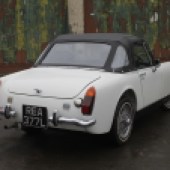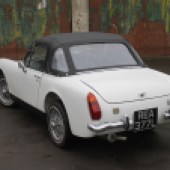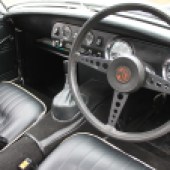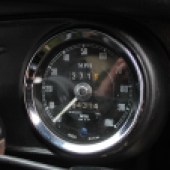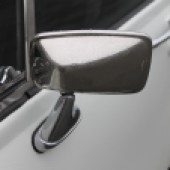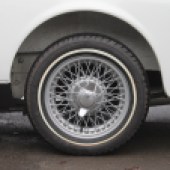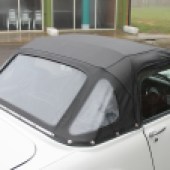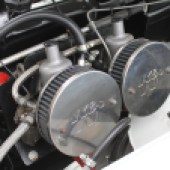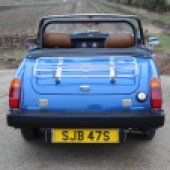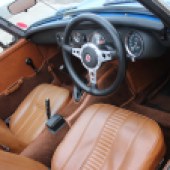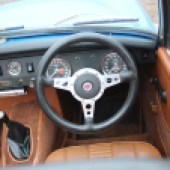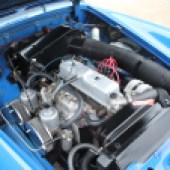A long-established classic with a huge following, the MG Midget still makes for a fine sports car that won’t break the bank. Here’s how to buy one
Words: Jeff Ruggles Images: James Howe, Jack Grover
The MG Midget is to many the archetypal classic small sports car. Front-engined and rear-wheel drive, it boasts simple mechanicals, excellent parts availability and plenty of fun for what can be a very attractive price. It’s little surprise, then, that it continues to enjoy a buoyant following.
The Midget was in production for more than 18 years from 1961 until late 1979, but it wasn’t a clean-sheet design. It was essentially an updated Austin-Healey Sprite, a car launched in 1958 with the oily bits from the Austin A35. The revamped Mk2 Sprite arrived three years later, with a remodelled rear end to include proper access to the boot and the ‘Frogeye’ clamshell with its famous upright headlights superseded by conventional wings and a separate bonnet.
A badge-engineered MG version was inevitable. After all, the Sprite was already made at MG’s Abingdon factory, and the octagon badge was still synonymous with small sports cars. MG certainly played on this by reviving the Midget name first ascribed to the M Type of 1929.
Launched in July 1961, the new Midget only had minor differences from the Sprite but brought sub-1000cc motoring back to MG enthusiasts for the first time since 1936. That was short-lived however, as the following year saw the 948cc engine replaced by a 56bhp 1098cc version with an improved gearbox and disc brakes.
For at least five years, development was almost continuous. The 1964 introduction of the Mk2 Midget (and Mk3 Sprite) saw the 1098cc motor revised to make it stronger, while other additions included exterior door handles, a new dash, fitted carpets and wind-up windows instead of side screens. The biggest change, however, saw the old quarter elliptic rear spring set-up replaced by a semi-elliptical layout, improving the ride while imposing less stress on the bodyshell.
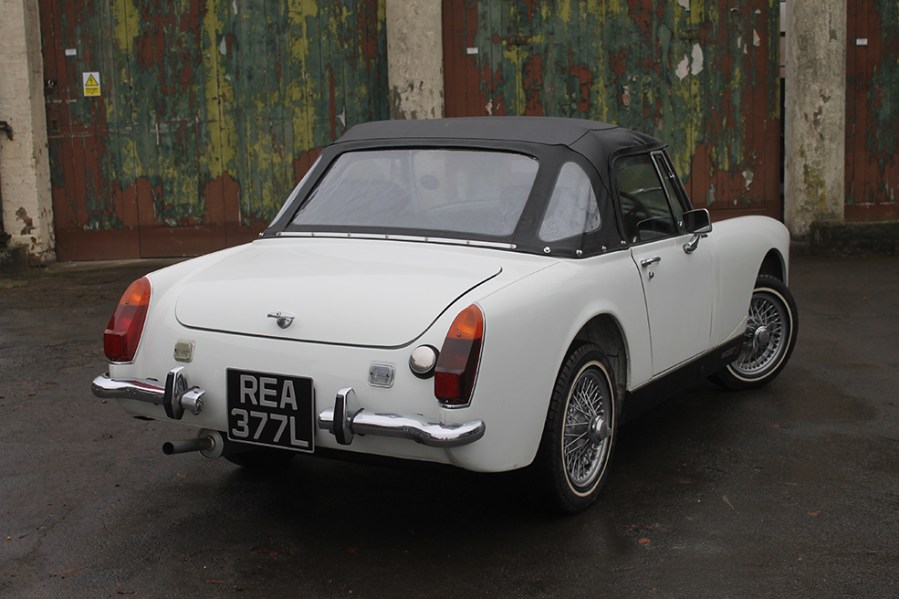
It took two more years for BMC to launch the Mk3 Midget (and Mk4 Sprite) with a 1275cc engine – and even then, it wasn’t the full-fat 76bhp Mini Cooper S version. Nevertheless, power was upped to 64bhp and it could now manage 95mph. For the first time, the cars also got a proper convertible-type hood rather than the infamous pack-away type.
Developed slowed under the new BL management, and it wasn’t until 1970 that the first big post-Leyland facelift occurred. The changes were mostly cosmetic, with a new colour palette, a more contemporary interior and a matt plastic recessed grille, plus quarter bumpers at the rear. The sills were now painted black and new Rostyle steel wheels were standardised. Incidentally, there was now very little to tell the Sprite and Midget apart, and in any case, the facelift would prove to be the Austin-Healey Sprite’s final hurrah. From January 1971, the car was simply named the Austin Sprite, and in mid-1971 it was discontinued altogether.
Then, in 1974, came the biggest changes ever made to the Midget in order to meet stringent new emissions and crash safety regulations in America. The rounded rear wheel arches, introduced only in 1972, reverted to the older squared-off design and meant more metal at the rear end. Much more notable, however, were the heavy black Bayer Bayflex ‘rubber’ bumpers and a raised ride height to bring the headlamps to the now-mandated distance above the road level.
Tight emission standards meant a change of powertrain too, but controversially it was the Triumph 1493cc unit fitted to the Midget’s market rival, the Spitfire. Top speed increased a fraction to over 100mph and torque improved, and there were other advantages such as an all-synchromesh gearbox. However, the larger unit was not as revvy and some feel it changed the car’s character.
The Midget remained a good seller, and although production came to an end in December 1979, that was far from the end. The little MG was on the cusp of being a classic even when you could still buy a new one and has since developed a massive following. There’s excellent club backing from the likes of the Midget and Sprite Club (www.midgetandspriteclub.com) and the MG Car Club (www.mgcc.co.uk), and almost all the parts are readily available to restore one.
The concept of being a hoot to drive but inexpensive and simple to work on means the Midget still makes sense as a classic car. Here’s what you need to look for when buying.
Bodywork
Sadly, many a Midget can be poorer than it looks thanks to the monocoque structure having plenty of nooks and crannies to foster corrosion. Starting the front, the bonnet can is prone to flexing quite heavily which leads to corrosion, while the lower front panel and the front wings can also suffer. Note that in around 1968, the sidelight was moved to a slightly lower position on the wing, so check they match on both sides.
Moving back, the rear of the front wings can trap mud where they meet the top of the sill, rotting the area away along with much of the surrounding metalwork. Also check the entire A-pillar area and scuttle, along with the ‘A’ posts, which are once again a stressed area and a water trap.
The inner and outer sills provide a great deal of the strength, so check along their length and at each end inside the wheel arches. Lift the carpets to check the inners, also checking the footwells and floorpans for rust and removing the jacking point plugs on the outside to inspect what you can see of the inner sill there. If the doors drag or nip on the sills it could be due to badly fitted replacement sills or that everything is so rotten the body is flexing. The gaps should be equal and the door should open and close easily. While you’re at it, pay particular attention along the door bottoms and the front lower corners.
At the back end, check the rear spring mounting points are in good condition, especially on early Midgets where the stress is all taken up in one area on each side. Look for collapsed spring box mountings or an uneven ride height as an indication of trouble. Rear wings and inner arches often rust, and pay particular attention to the double-skinned area behind the back of the rear wing where it comes up to meet the boot floor. Finally, check the boot floor itself, the spare wheel well and the rear panel.
Thankfully, almost everything is available new from British Motor Heritage, including a complete new bodyshell. Bear in mind though that they are priced close to £12,000, so if you’re looking at rotten car you’ll need to weigh up whether panel replacement or a full new body will work out cheaper.

Engine and transmission
Before mid-1974, Midgets and Sprites were fitted with trusty BMC A-Series, ranging from the 948cc unit of the early cars to the larger 1275cc version. It’s a hardy unit that should last beyond 75,000 miles before the bottom end clearances get a little loose and the valve train gets noisy. A higher pitch tapping noise from the top of the engine usually indicates badly adjusted tappets and just means re-setting them, while a lower down rattle normally means a rebuild is imminent.
Check for oil pressure building quickly on start-up to around 60psi, dropping to no less than 45psi when warm. Any less is a sign of wear, especially if accompanied by drumming noises from the bottom end. Look out for smoke too; grey/black smoke coming from the exhaust is usually mixture or timing related typically, but blue smoke under load can indicate worn bores or knackered piston rings, with a rebuild the only cure. These days, engine rebuilds or replacement units are nowhere near as cheap as they used to be.
If it’s blue smoke on the overrun or when accelerating after a period at idle, it could be worn valve stem seals or guides. Excessive white smoke is head gasket typically. This is often caused by overheating, so check that the radiator is in good condition and the coolant is nice and clean.
The Triumph engine in the Midget 1500 is prone to main bearing and big-end bearing failure after as little as 50,000 miles due to the size of its crank journals. The other weakness is the crankshaft thrust bearings which wear out very quickly and can kill the engine. Check that the engine revs don’t drop or that the crankshaft pulley doesn’t move forward when the clutch is depressed. The 1500 is also known for running hotter than the A-Series as well due to its narrower air intake, so a better radiator and the fitment of an oil cooler is advised.
The Mk1 Midgets have the BMC ‘smooth case’ gearbox with rather fragile cone-type synchromesh, which are hard to obtain spares for. The later ‘ribbed case’ gearboxes have baulk-ring synchromesh, are stronger and have vastly better parts availability. Bear in mind they still don’t have synchromesh on first gear though.
In both cases listen for drones from worn bearings or vibrations and noise from worn or chipped gears. Note that first and reverse are straight-cut and so will make a whining noise even in perfect condition. The Triumph unit in the 1500 has full synchromesh and gives little trouble, although the clutch is prone to juddering. Like the later A-series gearbox, they can be rebuilt without too much pain.
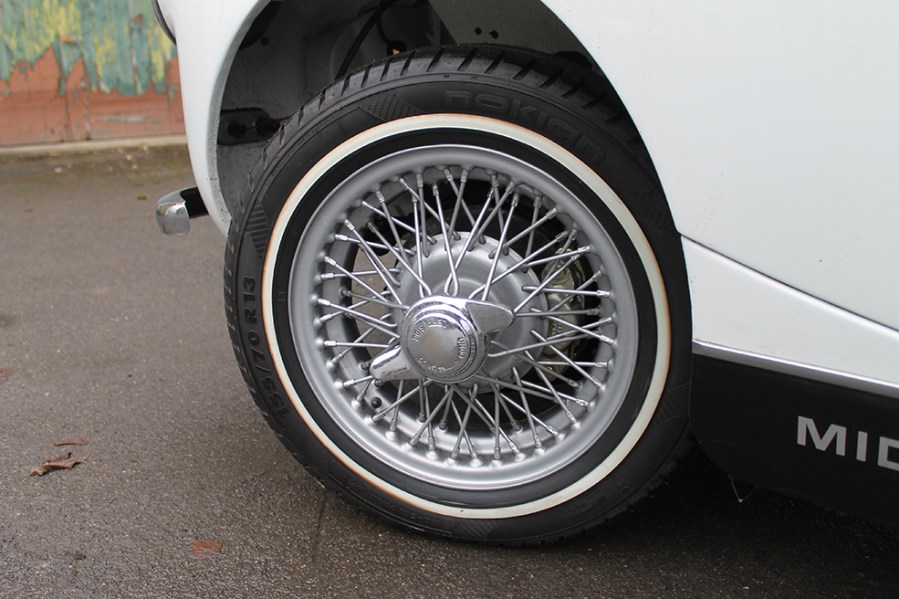
Suspension, steering and brakes
The Midget’s front suspension needs regular lubrication (there are three or four grease nipples per side depending on the age of the car) with the correct sort of waterproof grease or heavy oil – not regular LM grease. If this is neglected the front steering uprights and the fulcrum pins will wear quickly. With the car safely off the ground, check for free play – any movement could also be down to worn wheel bearings or track rod ends. Beyond the latter and split gaiters, the steering is largely trouble-free otherwise and should have very little slack in it.
All Midgets use lever-arm dampers on all four corners, which should be ‘bounce tested’ and inspected for leaks. At the rear, the springs can sag after time and may require re-setting or replacement, so look to see if the car is sitting level. If the ride is very jarring and the back end seems to ‘hop’ then the springs may have seized up due to rust between the leaves. The rear axle usually gives little or no trouble but listen for a noisy differential.
Early Mk1s had drums all round – check for leaking wheel cylinders and make sure the car pulls up straight and true. The later disc/drum system is reliable but check for worn or scored discs and out-of-adjustment rear drums. Any need to pump the brakes could mean a tired master cylinder but replacements are easily sourced.
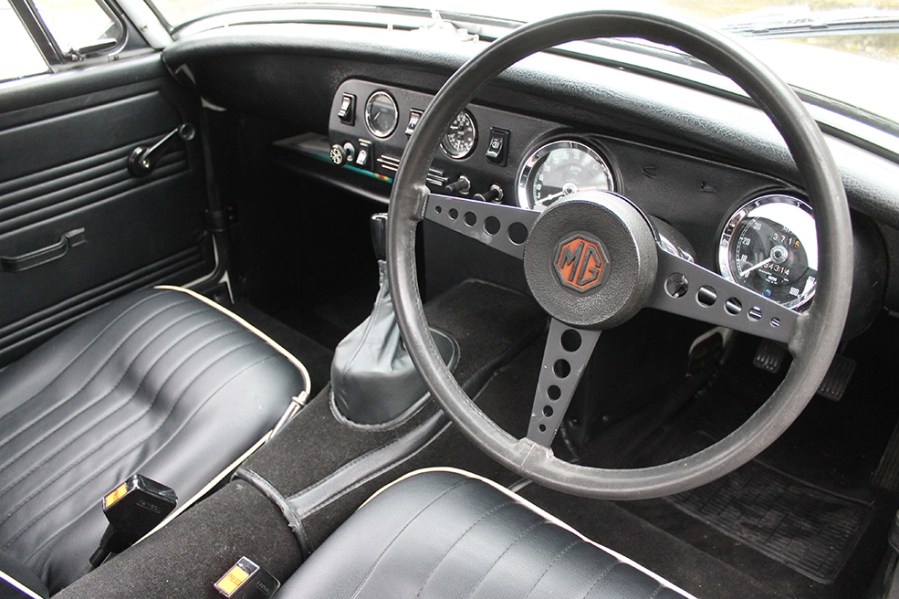
Interior, trim and electrics
Perhaps the most important thing to do when buying a Midget is check that you can fit inside. But should you notice worn trim, don’t worry too much as almost everything can be replaced. The trim changed slightly almost from model to model, so if you are looking for an accurately detailed car, your research should be thorough. However, the only real difficulty will be sourcing trim if you have an Autumn Leaf interior, unless you buy a complete new set. Original steering wheels for earlier cars can be hard to find too.
Electrics can cause issues as with any classic of this period, but components are easily sourced and complete looms are available. In any case, most issues can be traced to poor earths or failing bullet connectors.
Check convertible hoods to make sure they seal properly. Leaks aren’t uncommon but leaving a broken one for too long can lead to rust issues.

MG Midget: our verdict
Small, light and cheap to run, there’s much to love about the MG Midget. Its a British sports car done right, with bags of character and huge fun to be had behind the wheel. Parts support is excellent and specialist help is easily come by, while MG’s huge club following means you’ll have no problem finding information, finding events to attend and making friends. We’d go for an MGB if size is an issue, but if you’re a keen driver it’s the Midget that’ll serve up more direct thrills.
Midget values have been pretty static as things like classic Fords have gone into orbit, and thus they represent excellent value for money. Chrome bumpers cars are most valuable, and typically command between £6000 for a solid but well-used previously restored car, and up to £11,000 or so for a car freshly restored to a high standard, perhaps with a few light upgrades.
Black-grilled ‘square arch’ cars are slightly less valuable than chrome-grilled types by around 10 per cent, and you can add 10 per cent for a round wheel arch car. A roadworthy Mk1 will start at about £8000 and top out at around £15,000 or so for a top-class restoration job.
The 1500 is still one of the bargains of classic motoring, with perfectly good cars starting at about £2500 and even the best examples struggling to get more than £6000. We’ve seen several around the £3000 mark at auction, making them very hard to resist.



